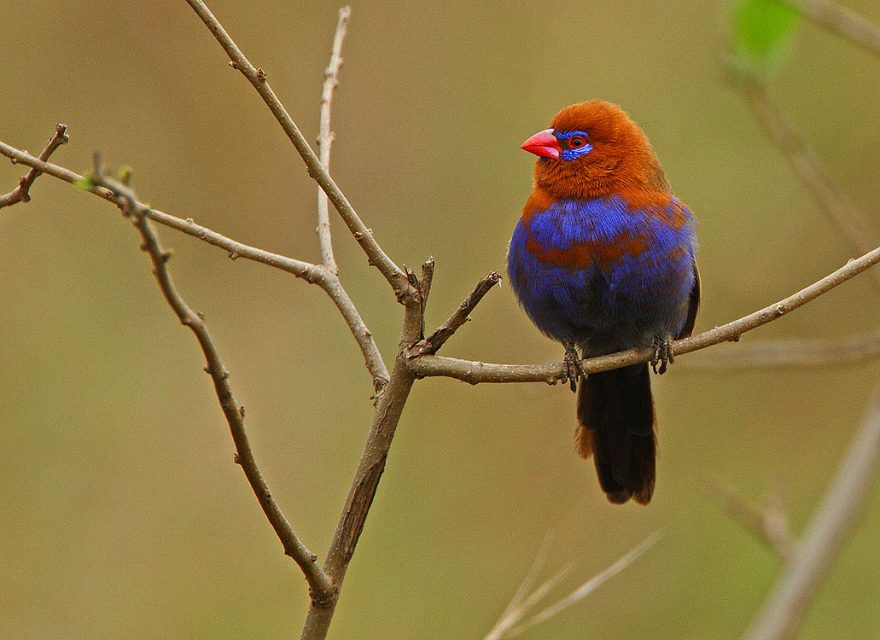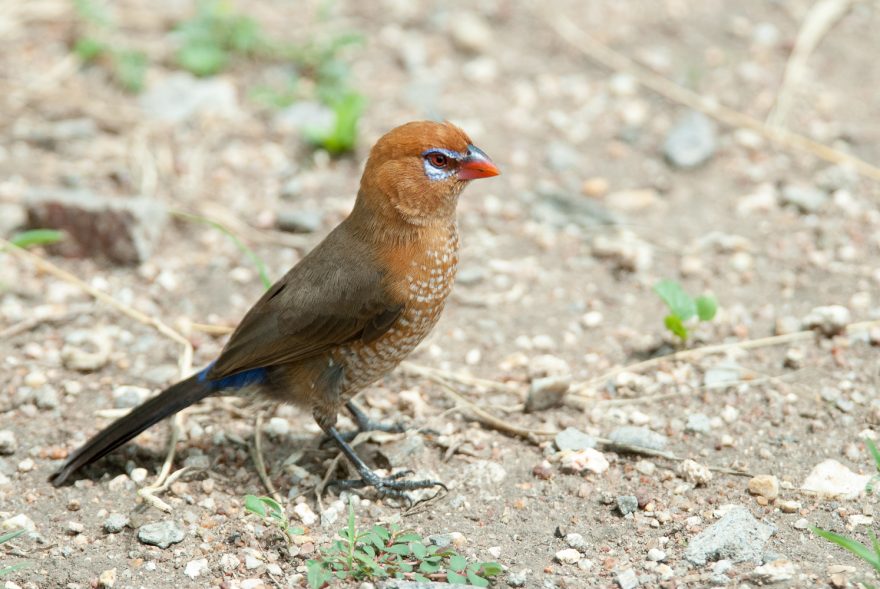The purple grenadier waxbill is a estrildid finch common to the eastern African nations of Ethiopia, Kenya, Somalia, South Sudan, Tanzania, and Uganda. They are exceedingly rare in Australian aviculture, found only in the aviaries of specialist breeders and command thousands of dollars per pair.

Diet & Feeding
A quality finch seed mix including canary seed and various millets forms the basis of the purple grenadier waxbill’s diet. Sprouting seed increases its nutritional value and is an effective way to improve your bird’s health and breeding performance. Freshly grown green seed heads should also be offered frequently.
Some leafy greens should be provided throughout the year. Kale, bok choy, endive, and silverbeet are the most nutritious and will be readily eaten. Spinach can also be given, but only sparingly as it can contribute to calcium deficiency.
Live food is an important component of the grenadier waxbill’s diet and should be provided throughout the year—especially during the breeding season. Mealworms, maggots, termites, and small crickets will be consumed readily. Commercial soft finch food mixes can also be provided for an added nutrient boost, which is especially useful when breeding.
Do not feed anything from the list of forbidden foods.
Housing & Compatibility
Purple grenadier waxbills are peaceful birds that do well in a mixed finch collection. Due to their rarity in Australian aviaries it’s recommended to house them as single pairs.
They should not be mixed with finches in the cordon bleu family, as hybridization will occur. During the breeding season, cock birds can become aggressive to other waxbill cock birds.
Purple grenadier waxbills like a bit of privacy when they breed, so a large planted aviary that provides plenty of hiding places is ideal. They are best suited to an aviary that provides thick shrubs or grasses.
The aviary should be protected from wind and cold, as grenadiers are intolerant of low temperatures.

Breeding
Best breeding results are achieved in spring through to early autumn, with a hen bird that’s at least 12 months old. Better breeding results are usually achieved in the second year of breeding. These birds demand privacy to breed successfully and will not tolerate nest inspections.
Purple grenadier waxbills will accept a wide variety of artificial nests, however their natural preference is for dense brush situated close to ground level. They will construct a nest from fine strands of dry grass and line it with feathers. The nest will generally be re-used for subsequent clutches.
Do not house with any of the cordon bleu species, as they may produce hybrids.
They typically lay 3-5 eggs in each clutch, which are incubated by both parents for approximately two weeks. Young birds fledge the nest at three weeks of age and are usually independent after a further month. Adult plumage is attained at three months of age.
Young birds can be left with their parents when they reach independence, however due to their rarity it’s best to separate them to completely eliminate the risk of parental aggression.
Sexing
Easy to visually sex. Only males have the strong purple coloring, while females are lighter in colour and have light spots on the front.
Mutations
None known or established.
Health
The purple grenadier waxbill’s diet is high in live food, making them especially vulnerable to parasitic infection. A strict worming and parasite control regime should be implemented to ensure their long-term health. We recommend Moxidectin Plus.
Healthy birds can be expected to reach approximately 6-7 years of age.